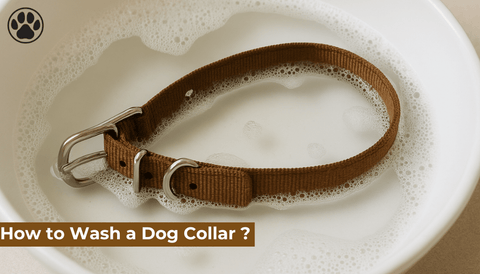
Why Do Dogs Scratch Their Beds ?
of reading - words
If you’ve ever watched your dog energetically dig or scratch at their bed before settling down, you may have asked yourself: why do dogs scratch their beds? While it may seem like a quirky or unnecessary habit, this behavior is deeply rooted in instinct and serves several practical purposes for dogs.
In this article, we’ll explore the top reasons why dogs engage in bed-scratching, what it means in different contexts, and how you can respond to it as a pet owner. Whether you're a new dog parent or a seasoned one, understanding this behavior can enhance your relationship with your furry companion.
Is Bed-Scratching Normal for Dogs?
Yes, scratching or digging at beds is completely normal dog behavior. It’s seen across breeds, ages, and environments. While the action may seem excessive or puzzling, it’s usually a harmless habit with natural origins.
Dogs scratch their beds for reasons ranging from instinct and comfort-seeking to stress and scent marking. In rare cases, it could also indicate discomfort or anxiety.
Understanding why dogs scratch their beds starts with a look at their evolutionary history.
Instinctual Roots: A Look at Dog Ancestry
Before dogs were domesticated, their wild ancestors—such as wolves—would dig and scratch at the ground to create a comfortable, safe sleeping spot. Scratching helped:
-
Clear away debris, insects, or sharp objects
-
Soften the ground for warmth and comfort
-
Mark their territory using scent glands in their paws
-
Create a den-like space for protection and rest
These deeply ingrained behaviors have been passed down, even though modern dogs sleep on plush beds in climate-controlled homes. So when your dog scratches at their bed, they’re likely acting out an ancient survival behavior.
Reasons Why Dogs Scratch Their Beds
1. Comfort and Nesting
One of the most common reasons dogs scratch their beds is to create a more comfortable spot. Much like fluffing a pillow or adjusting blankets, dogs dig and scratch to position their bed to their liking.
This may involve turning in circles, pushing material to the side, or digging down in an attempt to “fluff” the surface.
2. Marking Territory
Dogs have scent glands in their paws, and scratching is a subtle way to leave their scent behind. When your dog scratches their bed, they’re claiming it as their own space—a behavior seen especially in multi-dog households or new environments.
This territorial marking helps your dog feel secure and reassured in their resting spot.
3. Stress or Anxiety
Some dogs scratch more when they’re anxious or feeling unsettled. This behavior can become a self-soothing action, similar to how people fidget or pace.
Common triggers include:
-
New surroundings
-
Loud noises
-
Separation anxiety
-
Visitors or other pets in the home
If the scratching seems obsessive or is paired with whining or pacing, anxiety might be the underlying cause.
4. Temperature Regulation
In nature, dogs scratch or dig to cool off or warm up. Digging into dirt can expose cooler layers in the summer or provide insulation in the winter.
In a home environment, dogs may mimic this behavior when they’re too warm or too cold—trying to adjust the bed’s surface to a more comfortable temperature.
5. Boredom or Habit
Sometimes, bed-scratching is just a habit or a way to release excess energy. If your dog is under-stimulated, they may scratch or dig out of boredom.
Providing more physical exercise and mental stimulation can reduce this type of repetitive behavior.
6. Pregnancy or Maternal Nesting
In female dogs—especially those who are pregnant or in a false pregnancy—scratching and nesting behavior increases significantly. It’s a natural, maternal instinct as the dog prepares a space to care for her puppies.
Should You Be Concerned?
Occasional scratching is completely normal. However, there are times when the behavior could signal a problem:
-
Obsessive or destructive scratching (ripping up the bed)
-
Scratching at other surfaces like carpets or furniture excessively
-
Pairing with other symptoms like licking, whining, or pacing
In such cases, consult your vet or a professional dog behaviorist to rule out anxiety, discomfort, or a compulsive behavior disorder.
How to Manage Bed-Scratching Behavior
If the behavior is harmless, it’s usually best to let your dog be. But if it becomes disruptive, try these tips:
-
Provide a durable bed designed for dogs that like to dig
-
Offer calming tools like anxiety wraps, diffusers, or soothing toys
-
Use consistent routines to reduce stress-related scratching
-
Increase enrichment with puzzle toys, walks, and training games
-
Redirect the behavior if it becomes destructive
Avoid punishing your dog for scratching—this may increase anxiety and worsen the behavior.
FAQ
Why does my dog scratch his bed so much before sleeping?
It’s a natural nesting behavior. Dogs scratch to create a comfortable and safe sleeping space, similar to their wild ancestors.
Is scratching a sign my dog is anxious?
It can be. If your dog also shows signs of stress—like whining, pacing, or restlessness—it might be a calming behavior linked to anxiety.
Should I stop my dog from scratching the bed?
If the scratching is light and not damaging anything, it’s fine to let them continue. If it’s excessive or destructive, redirection and behavioral support can help.
Why does my dog scratch but not lie down?
This could be due to discomfort, anxiety, or confusion. If the behavior happens often, observe for other symptoms and consider a vet visit.
Can bed scratching damage the bed?
Yes, especially with cheaper materials. Consider investing in a dig-proof dog bed or adding a washable layer on top for protection.
Final Thoughts
So, why do dogs scratch their beds? It’s a mix of natural instinct, comfort-seeking, and communication. While it may look like a quirky habit, it’s often a sign your dog is feeling secure—or trying to make themselves feel that way.
As long as the behavior is not destructive or obsessive, bed scratching is perfectly normal. By understanding what drives this action, you’ll be better equipped to support your dog’s emotional and physical well-being.




